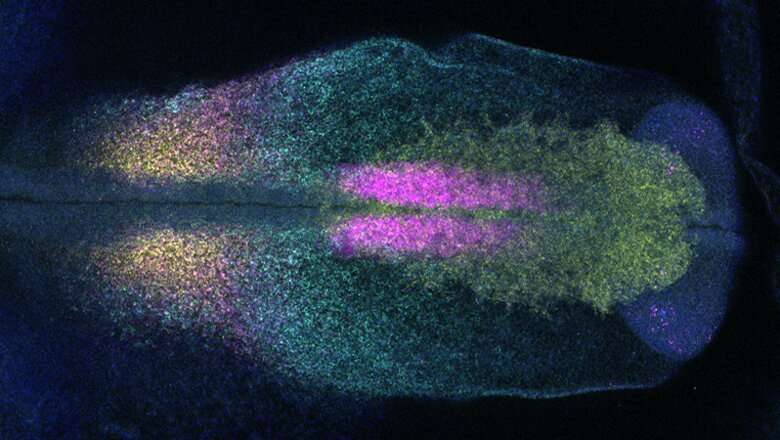New research uncovers key factor controlling ear development at early stages

A new King's-led study, published in the Proceedings of the National Academy of Sciences, has found that a single factor (a protein coding gene known as Sox8) can make non-ear cells adopt ear character during embryo development. The findings not only demonstrate how cell fate decisions are regulated in the embryo but may also inform reprogramming and regenerative strategies for the ear developmental malformations.
Responsible for the sense of hearing and balance, the inner ear is critically important for communication with the environment. In humans, developmental malformations of the ear have life-long consequences, while age-related hearing defects affect a large proportion of the population. Currently, there are no therapies that involve biological approaches—only hearing aids or cochlear implants, as how the ear normally develops is not fully understood and many of the controlling factors are poorly characterized.
Researchers from the Faculty of Dentistry, Oral and Craniofacial Sciences at King's, in collaboration with colleagues from the Francis Crick Institute, explored the earliest steps in ear development to determine what causes cells to become ear cells, and what makes them different from cells which form other sense organs.
"Ear development is a fascinating process and our findings provide a fundamental stepping stone to understand how multipotent progenitors become definitive ear cells during normal development and which processes go awry in disease," said Dr. Ailin Leticia Buzzi, lead author on the study
The adult inner ear has a very complex anatomy. It contains many different cell types such as sensory hair cells, which receive sound and balance information from the outside world and transform it into an electrical signal that is transmitted to the brain by neurons of the cochlear-vestibular ganglion. Supporting cells help the hair cells in their role, while other cells are specialized to ensure the right composition of inner ear fluids.
Despite this complexity, during embryo development the ear develops from a simple sheet of cells that first make a vesicle, which is then gradually transformed into the adult structure. While this happens, different cell types differentiate at the right place and time. This incredibly complicated and requires coordination of many different processes.
"It is remarkable that a single transcription factor can activate the 'ear program' in cells that normally never form the ear. Our findings may pave the way to reprogram any cell towards ear identity in the future," said Professor Andrea Streit, corresponding author and Head of Center for Craniofacial & Regenerative Biology
Using a combination of different methods ranging from embryological approaches to state-of-the-art molecular methods, the King's team identified a single factor that initiates the ear program: the transcription factor Sox8. Transcription factors regulate other genes to make sure that they are expressed in the desired cells at the right time and in the right amount throughout the life of the cell and the organism.
Expressing Sox8 in non-ear cells that normally generate other sense organs makes them to form vesicles that look like ear vesicles and have a genetic make-up similar to normal ear vesicles. More surprisingly, they can be found not just near the normal ear, but all over the head and generate neurons like the normal ear. This is a key finding as it is the first time that a factor not only induced the morphological changes that happen during normal ear formation, but also activates the program to produce specialized cell types in the ear: the neurons.
Future research will need to identify how Sox8 works, and whether it works alone or with co-factors. The authors hope this will lead to a pathway towards reprogramming other cells into ear cells and inform regenerative strategy for ear developmental malformations.
More information: Ailin Leticia Buzzi et al, Sox8 remodels the cranial ectoderm to generate the ear, Proceedings of the National Academy of Sciences (2022). DOI: 10.1073/pnas.2118938119
Journal information: Proceedings of the National Academy of Sciences
Provided by King's College London




















